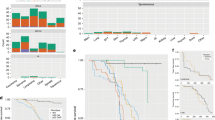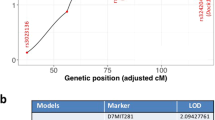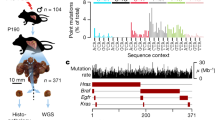Abstract
The Syrian hamster embryo cell lines, SHOK and MC-1, were used as recipient cells for DNA transfection assay to detect transforming genes in experimental mouse tumours. A mouse repeat sequence was utilised to check whether each transformed focus included mouse genomic DNA in the Hamster background. We investigated five mouse tumours that are related to X-ray radiation, and detected activated c-K-ras, c-mos, and c-cot oncogenes which induced foci of hamster cells. These results show that SHOK and MC-1 cells have unique properties for detecting transforming genes in experimental mouse tumours.
This is a preview of subscription content, access via your institution
Access options
Subscribe to this journal
Receive 24 print issues and online access
$259.00 per year
only $10.79 per issue
Buy this article
- Purchase on Springer Link
- Instant access to full article PDF
Prices may be subject to local taxes which are calculated during checkout
Similar content being viewed by others
Author information
Authors and Affiliations
Rights and permissions
About this article
Cite this article
Sasai, H., Higashi, T., Nakamori, S. et al. Syrian hamster embryo cell lines useful for detecting transforming genes in mouse tumours: detection of transforming genes in X-ray-related mouse tumours. Br J Cancer 67, 262–267 (1993). https://doi.org/10.1038/bjc.1993.50
Issue Date:
DOI: https://doi.org/10.1038/bjc.1993.50



